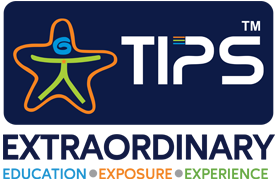- Blog By
Ms. Sumita Sen Mazumdar
Editor – Content & Academic Coordinator – KG
The Indian Public School
February 10, 2021 | In Blog 
Awaiting the crawl
Every parent eagerly awaits and frets about when their little bundle of joy will start to crawl and creep on the ground. Indeed, these are important developmental milestones in the life of a child. They are part of the natural sequence of development, a precursor to the ‘walk’.
Is crawling the same as creeping?
Babies crawl by moving on their bellies without lifting their body. Creeping is a more evolved crawl where, as arm strength builds, they can lift their tummies off the floor and move on hands and knees. Crawling precedes creeping.
How exactly do crawling and creeping help?

Crawling and creeping aid in visual and postural integration by encouraging healthy development of near and far vision as well as sense of balance and coordination through gross motor progression, contribute to creating foundational brain pathways for visual-motor tasks, directly impact a child’s ability to read and write, and provide the neurological foundation for many of the skills needed for subsequent learning.
Are these only for babies?
The common notion is that crawling and creeping, also known as cross-lateral locomotion or quadrupedal movements are for babies and walking is for adults. However, there is increasing scientific evidence that these movements can benefit adults as well, both physically and mentally as it involves the coordination of upper and lower body, that is shoulders and hips and thus could have rehabilitative effects on grownups with movement difficulties. Crawling and creeping also help with full body toning and strengthening the core by working on calves, quads, glutes, the shoulder girdle, the abdominal muscles, and muscles in the hips and feet.
Many sports coaches view crawling as a powerful tool to boost sports performance by providing strength and mobility training, improving lateral strength, and enhancing transference of power from the lower body to the upper. Soldiers and defence personnel are also required to master crawling and creeping movements because these build reflexive strength and the ability to reflexively respond to physical challenges with a comparatively greater degree of ease. Both for children and adults, crawling and creeping increase hand-eye coordination and left-right brain communication, which in turn strengthen the sensory nervous system of the body.
The crawling motion develops the corpus callosum, which improves cognitive abilities remarkably, both for children and adults. Crawling on the ground for a while will actually refresh the brain and allow for better coping of stress and even facilitate quicker understanding of complex learning material.

Crawling and creeping can be fun exercises too
Crawling and creeping, to have benefits in children or adults, do not have to be restricted to a forward motion. They can be backwards or sideways too. Animal walks like bear walk or crab walk or spider (man) crawl are some interesting ways of bringing about enthusiastic crawling and creeping movements in young or kindergarten children who are usually very keen about imitating the movement of various living creatures in the world around them.
Also read THE IMPORTANCE OF PRE-WRITING SKILLS IN KINDERGARTEN CHILDREN




